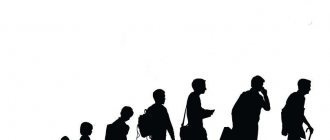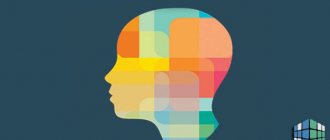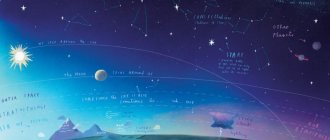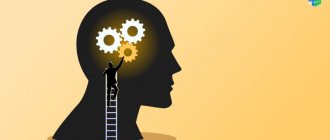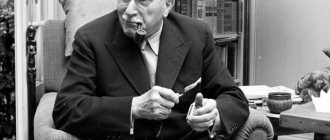Analytical psychology originated in the depths of psychoanalysis. It was founded by Sigmund Freud's close associate Carl Gustav Jung, a psychiatrist by training. He was born into the family of a Reformed church pastor. His interests were very diverse: in addition to medicine, he studied ethnography, the culture of ancient peoples, theology, and the religious views of various wild tribes. This could not but affect his psychological theory. Jung's works are relevant to this day and arouse deep interest not only among psychologists and philosophers, but also among representatives of pseudo-scientific knowledge. The breadth of knowledge and views of this great man made it possible to make an attempt to do the impossible - to reconcile the scientific worldview with the religious or the conscious with the unconscious.
The impetus for the development of analytical psychology, as well as for other psychodynamic teachings, was the excessive sexualization of Freud's theory. He believed that the basis of personality development is libido (sexual desire), and it is this that is the driving force, the stimulus for the emergence of all mental phenomena in a person’s personality. And a violation of libido lies at the heart of complexes, the roots of which go back to deep childhood. Jung, in his theory, expanded the boundaries of the concept of “libido”. He believed that libido is not only sexual attraction, but also desire in general, in relation to something or someone. He calls libido the driving vital energy.
Personality structure
Jung's personality structure overlaps somewhat with psychoanalysis, but still has significant differences. Freud argued that personality consists of the id, ego and superego. Where the Id is a person’s unconscious desires, deep complexes, his dreams. Ego is consciousness and self-awareness, and Superego is moral norms, a system of human values.
Jung identified other structures of the human personality. He singled out into one group the Ego, thoughts, feelings and sensations located in the area of consciousness - that is, everything that makes it possible to realize oneself as a human being. He included the personal unconscious into another group - emotions, experiences and memories of a person that were repressed from the area of consciousness, as well as complexes that determine the motives of human behavior. And he identified the collective unconscious as a separate category. And if the first categories are somewhat similar to psychoanalysis, then the concept of the collective unconscious refers exclusively to analytical psychology.
By the collective unconscious, Jung understood the emotional experience of all humanity, which at a deep level is located in the subconscious of each individual. This experience forms certain images and behavior patterns, which the author calls archetypes.
Collective unconscious
Personality is formed under the influence of the experience of previous generations of humanity.
Ethnic groups, nationalities, nations and races did not appear out of nowhere. They were created on the basis of general concepts about life, the formation of common mental images, which later became the basis for religious beliefs, culture, and philosophy. The collective unconscious influences the formation of rules of behavior, mentality, and actions adopted for society as a whole. Thus, it determines the fate of the individual in society. The connection can be traced at an intuitive level and is therefore difficult to explain.
This unconscious has not an individual, but a general nature of content and behavior. It contains historical, ethnic, sociocultural, and family foundations.
VASCULAR MOTOR CENTER
Archetype
Jung compared the concept of an archetype (archaic remains, primitive images) with the phenomenon of imprinting in animals: “In essence, archetypes are an instinctive vector, a directed trend, exactly the same as the impulse in birds to build nests, and in ants to build anthills.” [2, 42]. Archaic remains exist in human consciousness along with the instincts necessary for adaptation and assimilation in the human world. Archetypes are a kind of beacons through which a person navigates the world around him and has the opportunity, despite the lack of experience, to react and evaluate certain events. The main archetypes are: Anima/Animus, Persona, Shadow, God and others.
A priori existence of the objective psyche (archetypes)
Since the time of Plato, there has been a long-standing debate about whether ideas exist independently of their bearers in some semblance of an “ideal world of ideas,” or whether they are just a beautiful abstraction. Different philosophers have given different answers to this question.
Jung, following Plato and Kant, postulated the a priori existence of universal ideas. Exploring the psyche of people of different cultures and social strata, he found out that some mythological motifs are constantly repeated. In some cases, respondents had no idea (and could not get it) about what they were talking about. This led Jung to believe that these ideas were universal to all humanity. He called them archetypes or objective psyche.
In early works, the term collective unconscious was used, but later they decided to abandon it, since in the idea of an archetype it is important that they exist a priori , regardless of the presence or absence of society (and for the collective unconscious, as the name suggests, a collective is required).
According to Jung, archetypes not only exist as things in themselves, they actively manifest themselves in the life of the individual, in the form of archetypal images. For example, often in dreams we can fight with some character (usually of the same gender). Jung associates this with the archetype of the Shadow: the universal idea of the enemy opposing the hero. Or classical images associated with the absorption of a person (Jonah's whale) or the situation when an individual drowns in a dream, talk about the archetype of the Great Mother, associated with the idea of \u200b\u200bthe initial fusion of man and subsequent separation.
The presence of such universal ideas de facto creates in a person a certain matrix on which individual experience is “strung”. This brings us to the last idea - individuation .
Personality orientation
One of the most valuable contributions to personality psychology is Carl Gustav Jung's theory of the two main personality orientations - extraversion and introversion. This theory formed the basis for the development of various personality questionnaires and is still the subject of research by psychologists. Extraversion is a person’s focus on the outside world, on what surrounds him, on other people, objects. Extroverts are active, sociable, and open. Introversion is the opposite; it is a focus on the inner world of a person. Introverts are closed, secretive, preferring solitude and internal dialogue with themselves. According to Jung's hypothesis, both directions are always present in a person, but one of them usually dominates.
The ego is not the whole personality
The second concept looks more strange: according to Jung, our personality consists not only of ego-consciousness, but also of other parts. In part, this view may be reminiscent of Sullivan’s theory of personality dissociation (that consciousness is not unitary, but consists of different subpersonalities) or even the existential approach, where Dasein is the ego plus being at the same time.
Jung argued that in addition to the ego, our psyche contains complexes and archetypal images - certain structures formed around a core, a certain idea.
For example, every person constantly makes choices. Choosing an option means not choosing alternatives. However, unchosen options do not disappear anywhere - this, by the way, is confirmed not only by Jungian psychology, but also by modern cognitive psychology. So, over time, the amount of displaced or suppressed material becomes critical and forms its own structure. She can be called an alter ego by analogy with Dr. Jekyll and Mr. Hyde. Jung called it the Shadow and argued that this figure can, under certain circumstances, not only influence the decisions of the ego, but even temporarily seize control (a state of temporary insanity or passion).
However, the Shadow is not the only character in our personality. There are others too. Personality can be metaphorically defined as a parliament in which the “ego” is only the speaker who thinks he makes decisions, but in fact everyone votes. Jung once compared going through a midlife crisis to a chariot: all his life a person thinks that he is driving a chariot, but in the middle of his life he realizes that he is not the driver.
What does this thesis of Jungian psychology lead to?
Firstly, to the understanding that it is necessary to make efforts in order to understand and realize your entire personality, and not just the areas illuminated by consciousness. This cannot be done directly, but it is possible through analysis of the products of the unconscious, for example, through active imagination or dream interpretation.
Secondly, by accepting the presence of other personality components, it becomes possible to establish a connection between them. This is done as part of the individuation process (see below).
Thirdly, it solves the problem associated with belief in the ultimate savior: it becomes possible to direct consciousness to something different from the ego (thereby removing the danger of ego inflation), but at the same time part of the personality (the ultimate savior becomes the person himself, as it should be).
Psychological functions
Jung understood that the extraversion-introversion typology was very general, and his further research led to the creation of the theory of functional personality types. Each of the four types has a dominant function, “thanks to which consciousness receives its orientation in experience” [2, 36]. Rational types gain experience through thinking and feeling, that is, thanks to what is in the field of consciousness. A person who belongs to the thinking type navigates his life space with the help of his mind. And the feeling type - through feelings, assessing what is happening, how good or bad, like or dislike. Another category is irrational functional types; they perceive the world through their sensations and intuition. The sensing type receives information through the senses: sight, hearing, taste, smell and touch. The intuitive type relies on its intuition, which, like sensations, Jung attributed to unconscious processes. All functions are present in a person’s personality to varying degrees, and one of them, as a rule, is the leading one. Thus, based on two personality types and four psychological functions, Jung derived eight personality types.
Individual unconscious
An individual personality type is formed on the basis of personal experience.
Experience is gained by receiving information from the outside (extroversion) or by immersing oneself and one’s own rethinking of the events that have occurred (introversion). During his research, Jung divided the information a person receives into two systems:
- Ectopsychic
- connected with the external world and includes sensations, thinking, feelings and intuition; - Endopsychic
- associated with the inner world and includes memory, emotions and affects.
Through knowledge of the unconscious, a person goes through the process of self-realization.
A person becomes an independent unit. This is interesting
: It is believed that under the influence of the dominant function a certain psychological type is formed - an extrovert or an introvert, and also the main types of characters are formed (choleric, melancholic, sanguine, phlegmatic).
Etiology of neurosis
Jung saw the cause of neurosis in the inability of an individual to psychologically adapt to new life circumstances. Jung took the concept of libido beyond the sexual, and defined it as desire in a more general sense. He argued that libido develops in a person throughout his life, adapting to the world around him. On the path of its development, it encounters various obstacles, some of which turn out to be so difficult that too much strength is required to overcome them, and when the libido fails to cope, a process of regression occurs. That is, it returns to the previous stage of its development and under such circumstances neurosis develops. Thus, according to analytical psychology, the cause of neurosis is not rooted in a person’s past, but is located in his present, in the inability to overcome current life difficulties.
Methods used by Jung to explore the unconscious
Among the basic concepts of Jungian psychology, one should identify the methods by which one can explore the unconscious:
- Association test. To conduct the test, the psychoanalyst prepares a list of at least 100 words. The list is slowly read out to the subject; for each stimulus word, he must produce an association word. The psychoanalyst notes words to which the subject reacted differently: worried, angry, delayed in answering. The list is read twice, after which the highlighted words are grouped and analyzed for patterns.
- Dream analysis. To analyze the content of dreams, the patient must keep a diary, in which the plot of the dream should be recorded daily. Comparison of dream plots allows us to identify in which area the individual came into conflict with the unconscious. Often the cause of conflict is a personal complex.
- Amplification. The method consists in selecting suitable parallels—similar patterns of behavior in art, literature, history, and religion. From a suitable context, the basis is taken from which the dream content is analyzed.
The use of Jung's methods requires a creative approach and the ability to work with a variety of information.
Features of analytical psychotherapy
In addition to theoretical work, Jung also engaged in psychotherapy. The scientist believed that all people are different, and that in each individual case it is necessary to have an individual approach to the patient. It is important to take into account the psychological characteristics of the individual, and accordingly it is impossible to apply one universal method for all patients. The scientist believed that all psychological theories describe only the psychological experience of their authors, and therefore are very subjective and cannot reflect the entire spectrum of mental phenomena. Jung proceeded primarily from human health, and not from his pathologies. The main task of psychotherapy according to Jung is to reconcile the conscious with the unconscious, since one cannot exist without the other, and in the absence of their union, the personality cannot be whole. Finding selfhood, which represents spiritual harmony and integrity in all aspects, is the meaning of a person’s life and also contributes to his self-realization. Finding selfhood and self-realization is achieved through “individuation” - through “integration of the unconscious into consciousness” [2, 85].
The following quote from Jung from the Red Book manuscript most fully reveals the essence of analytical psychology:
My soul, where are you? Can you hear me? I say, I call you - are you here? I'm back, I'm here again. I shook off the dust of all lands from my feet, and I came to you, I am with you. After many years of long wanderings, I have come to you again. Shall I tell you everything that I have seen, experienced and absorbed? Or do you not want to hear all this noise of life and the world? But one thing you should know: one thing I learned is that everyone has to live their own life. [3, 9]
Analytical psychology is primarily therapy
Jung was a practicing psychotherapist, so all his discoveries were created by him on theoretical conclusions and practical application.
Jung devoted his entire life to creating a method of working with the unconscious. He believed that positive results can only be achieved with complete trust between the patient and the doctor. Therefore, he practiced conversations, encouraged any kind of creativity, helped the patient build new, more comfortable relationships with others, projecting them onto the doctor.
To understand the unconscious, Jung used the following methods:
- Association test
. In the process, stimulus words are identified that cause painful heightened feelings. You can find out what worries a person at the subconscious level by re-reading the associative series and putting the words together. - Dream analysis
. Jung paid special attention to this method. He considered dreams to be a manifestation of the position of a self-regulating mental system. This unconscious warns a person about imbalance. To interpret dreams, Jung used the amplification method (searching for parallels with well-known motifs in art, culture, literature, religion). - Active imagination
. Jung considered creativity to be one of the most effective therapies.
For reference:
According to the psychotherapist, working with directions should harmonize the relationship between the conscious and unconscious in a person.
Individuation as a life script
The main task of a person, according to Jungian psychology, is individuation - the process of psychological development of the individual, realizing the natural inclinations of the individual. It is a life scenario for everyone. In fact, it points out some milestones that every person must pass.
Different authors highlight different stages, I would note the following:
- Ouroboros stage or childhood. A person is in a state of complete or strong fusion with his parents.
- Separation or separation of an individual, leaving the parental home and beginning to make one’s own, individual decisions.
- Heroic path. Achieving external goals, usually associated with the material world: a dacha, a car, an apartment, etc. Determining one’s own place in society, accepting the rules of the “game”.
- Shadow Integration. If the ego is sufficiently established in the external world, all of his unchosen life scenarios “return” to the person. Everything that he refused, everything that he denied, suppressed or repressed, demands the right to life. Usually this stage coincides with the beginning of a midlife crisis. The individual is faced with the task of learning to combine opposites and stop dividing the world into black and white.
- Anima/Animus Integration. Correct completion of the previous stage brings a person to a state of integrity within his personality. However, this integrity is not complete: according to Jung, every man has a feminine part called anima, and every woman has a masculine part called animus. Integration with syzygy is the next stage.
- Creating the ego-self axis . After achieving integrity, the question becomes relevant: “Who really controls the chariot?” Jung gives the answer to this question in the form of the concept of the Self: on the one hand, with this term he denotes the entire totality of the psyche (that is, the entire personality as a whole), on the other hand - its center, on the third - the image of the transcendental or divine in man. Building relationships within the entire personality is the final task.
Individuation itself does not mean that a person is obligated to carry out this script. Free will is present in Jungianism. Stages only mean the milestones that will have to be passed.
Moreover, according to Jung, these stages will be passed through by everyone. His student, Marie-Louise von Franz, in her work “On Dreams and Death,” analyzes, among others, the dream of a girl who soon died, where she sequentially goes through all these stages. Due to her early death, she could not go through them consciously, but passed them unconsciously, in her sleep.
Summary
Of course, the above five “core” principles of Jungian psychology are extremely subjective. Moreover, there cannot be any objectivity here purely theoretically: Jung himself always argued that he does not like and does not intend to create theories, but prefers to identify empirical facts and see where they lead. This path can still be followed today.
Analytical psychology provides an interesting view, not without inner meaning. Another thing is that it must be looked at with the “naked” eye, without the prism of any paradigm or theory.


